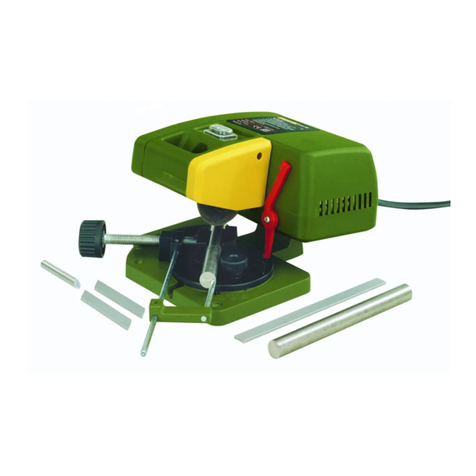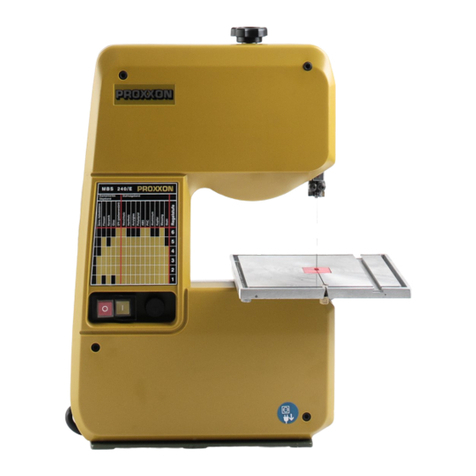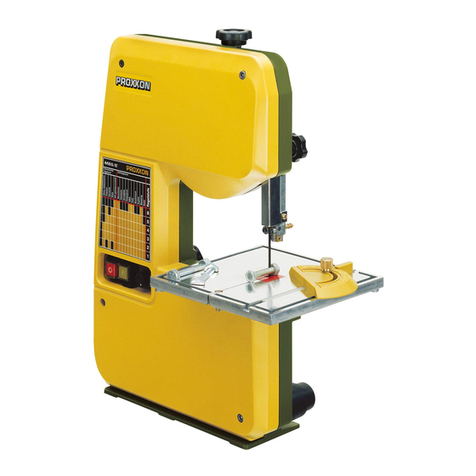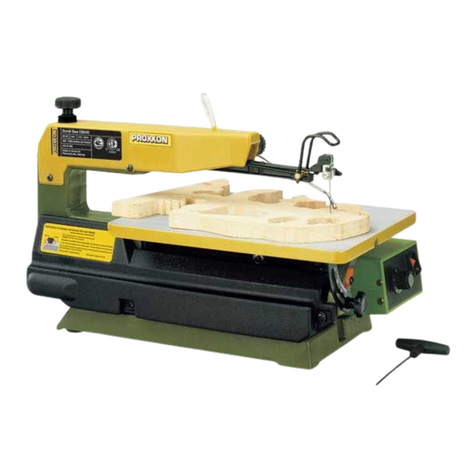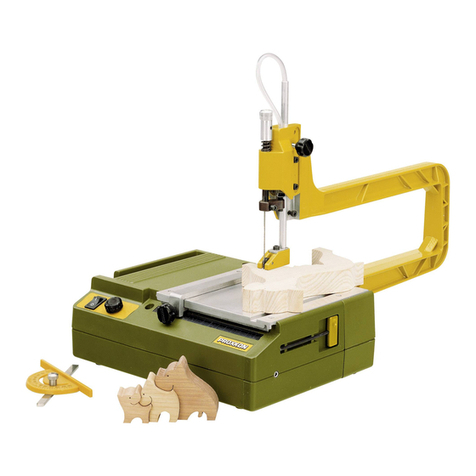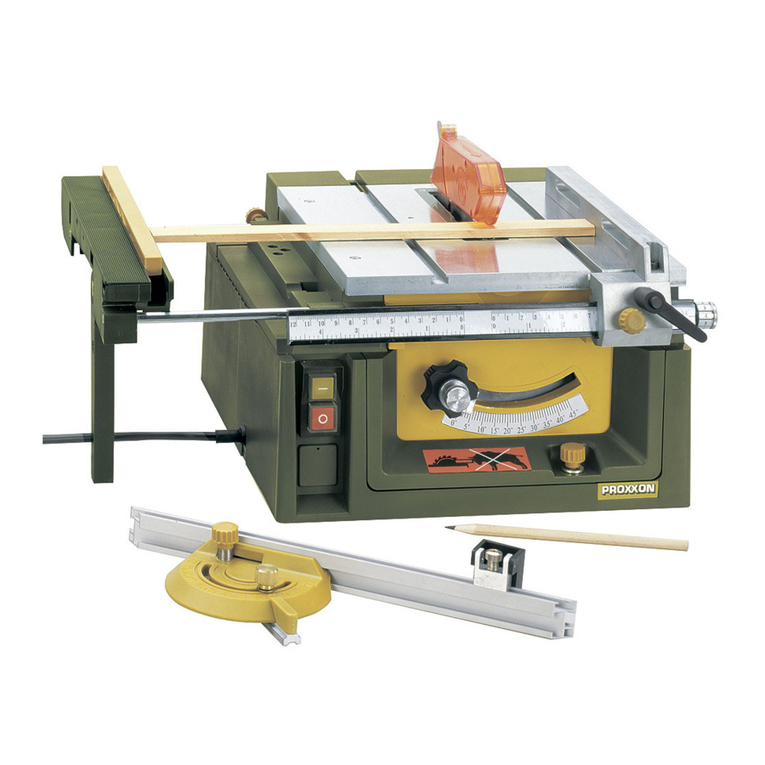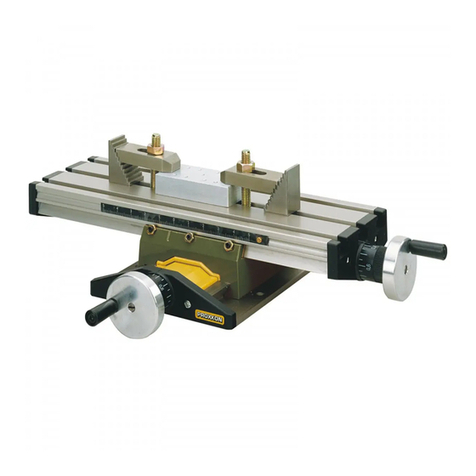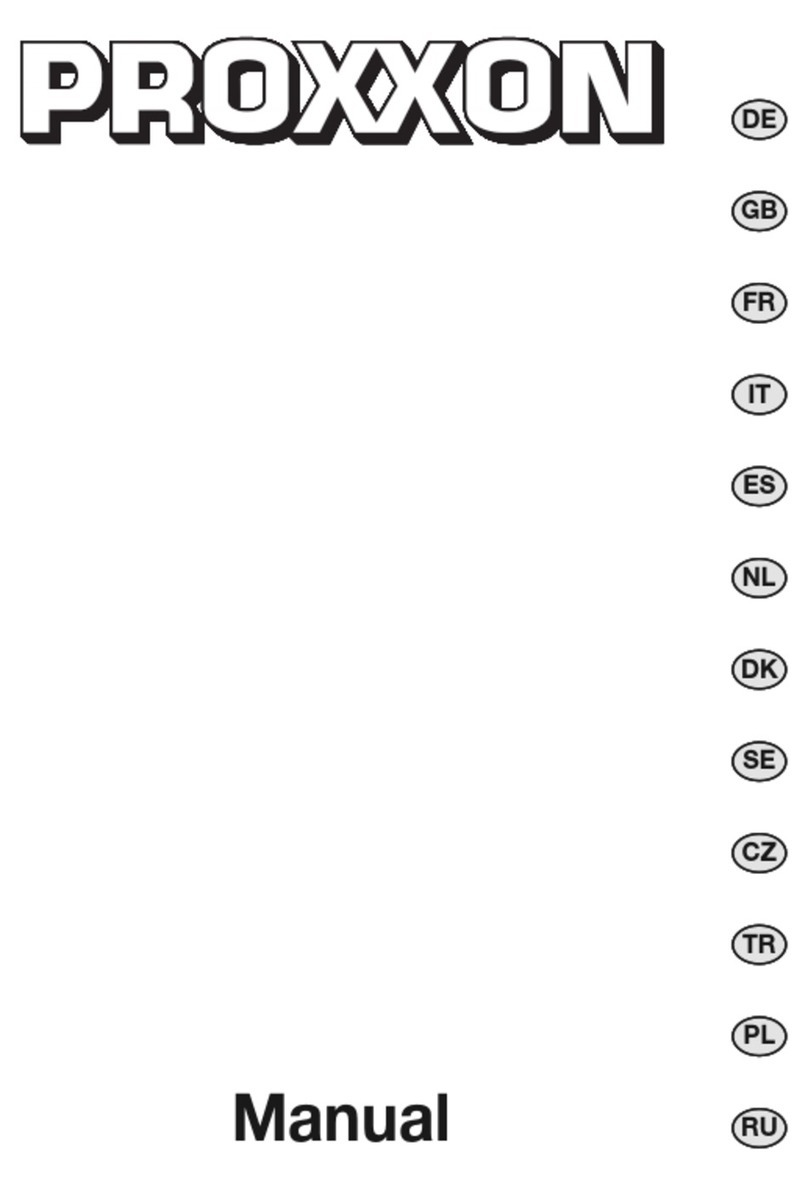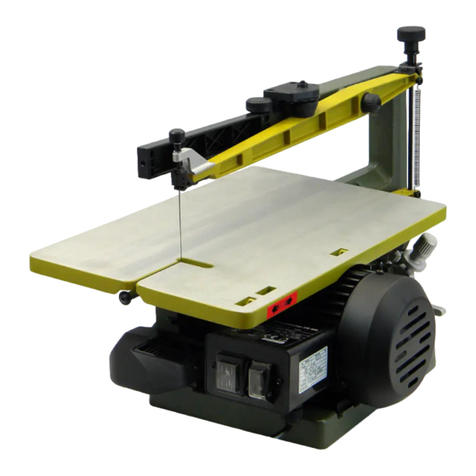–Adapt thefeedto therequirementsbysaw blade, speedand work
piecematerial.
–Hard materials,finesawbladesand thickerwork piecesdonot “tol-
erate”asmuch feedassoftmaterials,roughsaw bladesand thin
work pieces. Youcan also experimentwithvarious speeds.
–Guide thework pieceslowly into thesawblade, particularly if the
bladeis very thin and the teethvery fine orifthework pieceis very
thick.
–Only useperfectsawblades.
–Donot let thedevice operate unsupervised.
–Carefully mark out/block thecheck line.
–Makesure thereis goodlighting.
–Always work withconnectedvacuum cleanerand carefully set the
air nozzle (8, fig.1).
–Youwill achieve thebestresultsifthewoodthickness is under
25 mm
.
–Withwoodthicknessesofgreaterthan 25 mm, thework piece
mustbevery carefully guidedto stopthesawbladefromjam-
ming, bending, twisting orbreaking.
–Forprecisecutting, note that thesawbladewill always try to fol-
lowthedirectionofthefibre (appliesparticularly to thin sawblades).
7.1.1 Selecting the saw blade
As alreadymentioned, thecorrectselectionofmaterial has avery
greatinfluence onthequalityoftheresult.The tablebelowshould
serveas asmall guide.Extensive experiencewithmanymaterials and
typesofsaw bladeis, ofcourse, always helpful withselection. You
can experimenthere.
Tip:
Thesawbladesaremostly only particularly worn atplaceswhere
the teethareparticularly highly utilisedwhensawingand, therefore,
becomebluntvery quickly.To“useup” thenon-worn teethand thus
increase the edge life ofthesawingblades,youcan artificially“raise”
thebearingsurfaceforthework piecesomewhat.
Todo this,simply secureasmooth, table-sizedunderlay withtherequired
thickness to thesaw table, using, forexample, double-sidedsticky tape.
Thenon-worn partsofthesawbladearenowsawing thework piece.
This is particularly sensibleif youoftensaw very hard and wear-in-
tensivematerials withthin blades.
Thenumerical dataforcharacterising the“fineness” ofthe toothing
is relatedto thenumberofteethperinch ofsaw bladelength:
Teeth/inches Material
approx. 10-14 Softand hard wood(fromapprox. 6-50 mm),
plastics,softmaterials, thickerwork pieces
approx. 17-18 Finesawingwork,wood(up to 6 mm), plastics,
softmaterials, thinnerwork pieces
approx. 25-28 Plastic,GRP,non-ferrous metal,Plexiglas,iron
withrestrictionPertinax
approx. 41 Iron,Pertinax
Round sawingblades(withflat ends)can ideally beusedforplastic,
hard and softwood. Theycut onall sides,soitis not necessary to
turn thework piecewhensawing.
7.1.2 Selecting the speed
This representationcan, ofc
ourse, only giveinstructions onthe gen-
eral directionto take.Asintheprevious section,youhave to "exper-
iment”alittle to find the optimal result.Theappropriate speedalso,
ofcourse, depends onthebladeused, thematerial ofthework piece,
thefeedetc.
Level Material
900 strokes/min Steel,brass,non-ferrous metals,GRP,plastics
1400 strokes/min Aluminium,wood,polystyrene, rubber,leather,
cork
7.1.3 Possible causes of faults
Thefollowingcausesmay break thesawblade:
–If bladeis tensionedtoo tightly ornot tightly enough
–Mechanical overloading ofthebladeby feeding too quickly.
–Bending ortwisting ofthebladewhenturning thework piece too
quickly whencuttingcurves.
–Whenthewear limit ofthesawbladehas beenreached.
–If thescrews are tightenedonsaw bladeswithcross pin.
7.1.3.1 Set saw blade alignment (fig. 2)
In avery fewcases(slantedcutting edge in thework piece, strong
bladedriftduring operation)itcould benecessary to makeminorad-
justmentsto thebladealignmentat theuppersaw blademount (see
pos. 2, fig.2).Byrotating thesawblademount, thesawbladealign-
mentwill bechangedasdesired.
1.Clamp thesawbladeand check theparallelism ofthesawblade
usingan angle 5 (orangledwork piece) arrangedasshown in the
graphic.
2.Thesawbladecan bealignedifnecessary. Releasescrew11 us-
ingan Allenkeyand swivelthesawblademountinto thecorrect
positionto alignthesawbladein parallelto theangle.
3.Tightenthesawblademountin thecorrectly set positionusing the
Allenkey11.
7.2 Sawing (fig. 7)
Afteryouhavefixedthesaw to thework space, adjustedthework
table, preparedthedust exhaustand air nozzleand haveclampedthe
suitablesawblades,switch onthemachineand guide thework piece
as shown in fig.7.
Remember:Adapt thefeedaccording to thematerial, thesawblade
and thework piece thickness. Hard materials,finesawbladesand
thick work piecesdonot “tolerate”asmuch feedassoftmaterials,
roughsaw bladesand thin materials.
Youcan also experimentwithvarious speeds.
Note:
Safeand precisework is only possiblewithcareful fixing!
Themechanical fret sawispredominantly amachineforsawing
curves. Forgoodresults,pleasenote thefollowingpoints:
- 16 -
